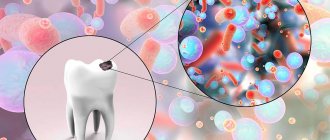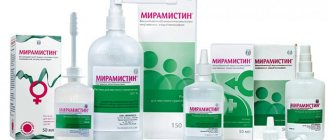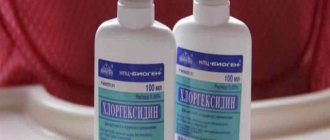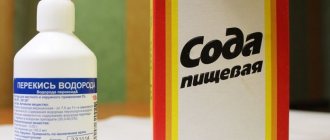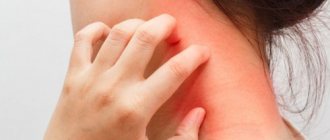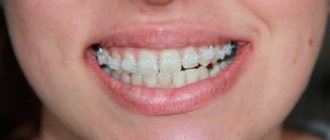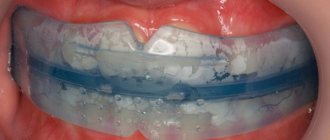- What is hydrogen peroxide: chemical formula and properties Chemical formula
- Chemical properties
- In traditional medicine
Hydrogen peroxide was first obtained by the chemist Luis Tenero in 1818 and very soon began to be used in industry. Now it is widely used in households and everyday life.
How to treat wounds with hydrogen peroxide
First of all, hydrogen peroxide is valued for its therapeutic effect. It is often used to treat wounds. The solution can be applied to small wounds, which will remove dead tissue, prevent the spread of germs and stop bleeding. In this case, peroxide can be used once. With frequent use, you can stop the spread of beneficial bacteria involved in healing wounds.
For infectious acne, the solution can be used to treat the affected areas, which will speed up the healing process.
What type of perhydrol is best to use for a pool?
Experts recommend using the following types of substances: medical 30-40%, technical 60% grade “B” and 37% grade “A”. Naturally, the dosage of each type varies, so you must carefully study the instructions before use. It should be noted that a concentration of 60% is explosive and working with it requires certain skills and knowledge. If the liquid in the container is accidentally contaminated, a chain reaction is initiated, promoting decomposition into water and oxygen and, as a result, heating. Temperatures can rise to 1000 degrees. The released H2O suddenly turns into vapor, the volume of which is 7000 times greater than the original amount of the product. Accordingly, an explosion and breakthrough of the container occurs.
How to dye your hair with hydrogen peroxide
You can dye your hair with the solution. It is especially good at covering regrown dark roots on bleached hair. It is necessary to blot the roots with the solution and leave for 30 minutes, then rinse well under warm water.
The product is also effective for gradual lightening with oxen. To do this, you will need to take equal amounts of water and hydrogen peroxide and add them to the sprayer. Then you need to spray the solution onto the strands and distribute evenly with a comb. Wait until completely absorbed. If you periodically carry out such manipulations, you will notice how the strands begin to lighten.
Dihydrogen dioxide: features
The foreign name, which can most often be found on packages in stores, sounds like Hydrogen peroxide; the formulations Dioxidane and Dihydrogen dioxide are also common. In Russian, synonyms are used - hydroperite (if we are talking about tablets or capsules) or perhydrol. This substance is easily soluble in water, alcohol, ether and a number of other liquids. The compound has equally oxidizing and reducing properties: oxidizing nitrites and nitrates, releasing iodines and breaking down proteins, reducing manganese, gold and silver salts. This is precisely the reason for the use of hydrogen peroxide for pools with shallow, small-volume tanks. Once in the environment, it quickly decomposes, which ensures its relative safety, and is also stored for a long time without losing its properties. The substance is widely used in industry, agriculture, medicine and in everyday life. For reservoirs it is used as an effective, powerful disinfectant, bleaching, bactericidal agent with instant action.
Is it possible to put hydrogen peroxide in your ears?
Drops are effective in the presence of an ear infection, as well as in cases of blockage in the ear. But if you have such problems, you should not rely on hydrogen peroxide alone, but you need to inform a specialist about this, otherwise the problem may only worsen.
Earwax is not an infection, but it can cause blockages. In this case, you can use a couple of drops of hydrogen peroxide and olive oil. Instill the resulting solution into the ears. After the procedure, you can rinse your ears a little under warm water.
Some people claim that if you drop 2-3 drops of the solution into your ears, it will help get rid of flu germs and viral diseases.
Advantages and disadvantages of purifying pool water with peroxide
Pros:
- Cheap - unlike most modern cleaning products and special systems, peroxide is inexpensive.
- The liquid has no color and no such strong odor as, for example, the no less common chlorine.
- Peroxide not only purifies the water, but also makes it transparent, removing the unpleasant greenish tint.
- The use of peroxide does not affect the change in PH (acid-base balance) of water.
- Cleaning a pool with hydrogen peroxide does not require the presence of a specialist.
- If the dosage and recommendations for use are followed, the product does not harm human health.
- The result lasts from one to two months.
Minuses:
- Efficiency decreases for water whose temperature exceeds 27-28°C
- . To avoid constant exposure to hydrogen peroxide on the skin (especially sensitive and prone to allergic reactions), alternate cleansing methods.
- Repeated cleaning of the pool with hydrogen peroxide will be required after 1-2 months (depending on the degree of water contamination).
Is it possible to brush your teeth with baking soda and hydrogen peroxide?
Hydrogen peroxide is used to whiten teeth. To do this, you need to rinse your mouth with the product for 20-30 seconds and then spit it out.
You can make toothpaste using hydrogen peroxide at home. To do this, you need to mix it with baking soda.
Regularly performing such procedures will make your teeth whiter. In addition, toothpaste based on soda and peroxide helps combat bad breath.
Consequences of using a highly concentrated composition
As mentioned above, peroxide breaks down into oxygen and water. It is also not expensive and does not have an unpleasant odor.
But, if you do not follow clear recommendations for use as a pool cleaner, perhydrol will provoke the following:
- dry skin;
- at increased concentrations – a painful burn;
- if water gets into the mouth and then the stomach, the person will suffer from irritation of the mucous membrane;
- loss of natural hair color.
However, peroxide cannot be called a strong disinfectant. In order to effectively destroy reproducing microorganisms in water, the concentration must be at least 200-300 grams per 1 m3 . This amount of perhydrol is considered harmful to humans.
How to remove stains with a solution
Hydrogen peroxide is actively used by housewives in everyday life. It helps remove any stains from countertops, tiles and other surfaces in the house. This will not only clean the house, but will also prevent the appearance and proliferation of harmful microbes.
Peroxide will help get rid of limestone deposits. To do this, you need to spray the solution onto the desired area, leave it for 2-3 hours, and then wash it off with a sponge and soap.
A lot of dirt collects on the tiles and stains appear, which are very difficult to remove over time. Peroxide will remove mold and refresh the appearance of the tiles. To do this, you need to mix the product with flour so that the consistency resembles a paste. Treat the ceramic surface with the resulting solution and leave overnight. Wash the surface in the morning, after which all dirt will disappear.
Answers to the most frequently asked questions
1. What is the frequency of preventive cleanings?
If all calculations were performed correctly and the result is satisfactory, the next cleansing is carried out no earlier than 30 days later.
2. Is it better to use peroxide or chlorine?
Chlorine is the most well-known disinfectant and can quickly destroy most types of bacteria. It is recommended for cleaning swimming pools in almost all sanitary organizations. Hydroperite is a stronger and more effective drug if it is necessary to remove any traces of organic matter, sweat or urine, etc. It does not disinfect as well as chlorine, but it can cope with a small bowl volume. Among its advantages is the absence of odor and influence on pH. The correct answer is: alternate the substance.
3. If there is still liquid left in the container after use, will the opened container lose its properties and the shelf life will be reduced?
No. The concentration decreases very slightly, no more than 0.5% in 30 days.
4. Should peroxide be poured into the reservoir as soon as it is filled with water, or should it wait until it becomes dirty and cloudy?
You can use the drug at the first manifestations of turbidity, but it is better to fill it right away, as a preventive measure - there is no difference.
AMETHYST - 02 M up to 2 cubic meters/day.
Aeration unit AS-1054 VO-90
Main table dispenser AquaPro 919H/RO (hot and cold water)
5. If the water mass is heavily polluted, like a swamp, is it worth using the composition?
Yes, but please note that the disinfection period will be longer than usual.
6. What to do if H2O does not become transparent after the events?
There may be several reasons: incorrect dosage, not enough time has passed, there are many impurities of lime and chlorine inside. The liquid should be purchased only from trusted manufacturers, so as not to purchase a fake that will be ineffective.
7. If a certain amount of new water is added to the pool, is it necessary to add hydroperite again?
Preferably as a preventive measure.
8. If a reservoir is chlorinated, after what period is perhydrol added?
Usually no earlier than 5-7 days.
9. If salty liquid is poured into the bowl, is the use of peroxide effective?
No, in this case it is not recommended to use the product.
10. How does the solution affect children and animals. They may accidentally ingest H2O while swimming. Will it do any harm?
At a rate of 700 grams per 1000 liters, the percentage is 0.7 grams per 1 liter. These are the indicators immediately after use. Within a day the concentration decreases significantly. Therefore, it is not recommended to swim only during the action of the chemical compound. In the future, the water mass is safe.
11. After pouring the product inside, should the filter be turned on immediately or wait?
It is better to start it at the same time, since a suspension begins to form in the very first minutes. Keep it clean, as actively formed dirt can quickly clog it.
In what cases is Neumyvakin treatment indicated?
The list of pathologies for which H2O2 is useful and effective is extensive. Indications for oral use:
- Organs of the respiratory system - ARVI, influenza, tonsillitis, bronchitis, sinusitis, emphysema and lung cancer.
- Heart and vascular system - atherosclerosis, coronary artery disease, varicose veins, myocardial infarction.
- Nervous system – stroke, brain disorders (sclerosis, nervous disorders).
- Metabolic disorders - diabetes, obesity, systemic lupus erythematosus.
- Skin diseases - eczema, various types of skin cancer, fungal infections.
- Oral diseases – stomatitis, periodontal disease, caries.
- Skeletal system – osteoporosis, arthrosis.
- Digestive system - disorders of motility and peristalsis, putrefactive processes, changes in acidity, enzymatic disorders, constipation.
- Gynecological diseases.

